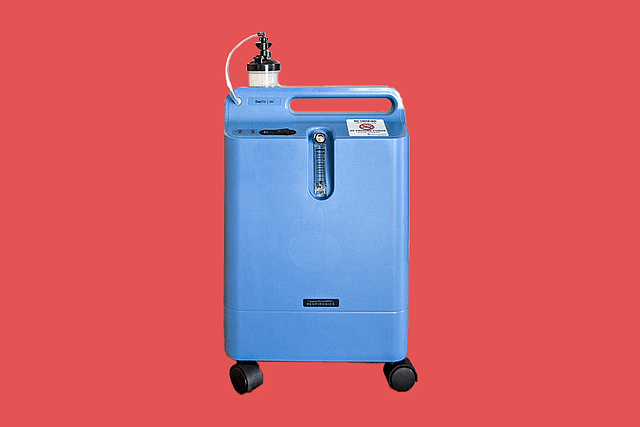
Explained: What Are Oxygen Concentrators And How They Differ From Oxygen Cylinders
An oxygen concentrator takes ambient air and filters oxygen from nitrogen.
In the second wave of the Covid-19 pandemic in India, the coronavirus is attacking the lungs of the patients, making them gasp for breath.
Owing to the major surge in Covid-19 cases, there is a huge demand for oxygen supply. Social media platforms are also flooded with posts of people looking for oxygen concentrators and cylinders.
While the Centre and state governments have taken various measures to accelerate the production of medical oxygen in the country, efforts are also being made to import concentrators to deal with oxygen scarcity.
Many foreign governments and international private sector companies have come forward to support India in the hour of crisis by sending oxygen concentrators.
Air India is airlifting more than 10,000 oxygen concentrators, manufactured by Philips, from several countries.
As of now, it has already flown in 636 concentrators from the United States.
India is likely to get 25,000 oxygen concentrators from China, while the United Kingdom has already sent 495 concentrators.
The country has also received 256 oxygen concentrators from Singapore and 800 from Hong Kong.
Even Microsoft has said it will help in the purchase of concentrators, while Amazon India is obtaining more than 1,500 oxygen concentrators, as well as other medical equipment for donating to hospitals and medical facilities.
What are oxygen concentrators and how they work?
These devices are used when someone needs oxygen therapy, as their respiratory system fails to get enough oxygen just by breathing.
These are devices that concentrate the oxygen from ambient air.
An oxygen concentrator is recommended by doctors to fulfil the shortage of oxygen in a person's body.
The atmosphere has 78 per cent nitrogen, 21 per cent oxygen and 1 per cent other gases.
An oxygen concentrator takes the ambient air and filters the oxygen from nitrogen.
Then the device releases the nitrogen back into the air and collects the oxygen, dispensing it to the patient through the pressure valve that helps to regulate the flow to the nasal cannula, ranging from 1-10 litres per minute.
The oxygen that is concentrated in an oxygen concentrator holds 90 to 95 per cent purity.
The World Health Organization (WHO) said in a 2015 report that oxygen concentrators are designed for continuous operation and can produce oxygen 24 hours per day, seven days per week, for up to five years or more.
In the current situation, these devices can be used for mild to moderate Covid-19 patients.
But it is not recommended for ICU patients as they are required to use liquid medical oxygen (LMO).
However, there are also oxygen tanks, which contain pressurised oxygen that can be continuously released at specific flow rates to provide medical grade oxygen to the patient.
But their weight and portability are noted as disadvantages. Unlike concentrators, which can continuously support a patient with oxygen, the tanks can only contain a limited amount of oxygen.
Since oxygen tanks need to be refilled or replaced frequently, their initial low price adds up over time to make their cost higher long-term.
However, amidst the massive surge in cases, the demand for oxygen concentrators has gone up from 40,000 annually to 30,000-40,000 a month, industry experts say.
Meanwhile, the Times of India reported that rent per month of a concentrator, which was Rs 4,000 until a few days ago, is now Rs 20,000. These devices, sold for Rs 42,000 to Rs 45,000, are now priced at Rs 80,000.